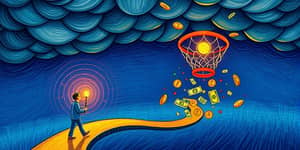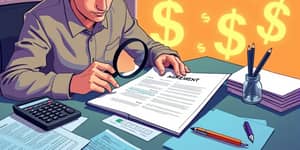
Personal loans are emerging as a powerful tool to fund sustainable transformations in homes and lifestyles. By combining financial flexibility with environmental responsibility, these products help borrowers make lasting changes.
Green living encompasses choices and improvements aimed at reducing carbon footprint and waste. Homeowners and renters alike are investing in upgrades that save energy, water, and resources while boosting property value.
Traditional personal loans are unsecured credit products offered by banks, credit unions, and online lenders. As environmental awareness grows, lenders now market green personal loan products specifically for eco-friendly upgrades. In parallel, green mortgages and sustainability-linked loans provide funding tied to the energy performance of a property.
The U.S. personal loan market reached $253 billion in outstanding debt in 2025, growing 3.3% year-over-year. Of the 24.6 million Americans carrying these loans, the average balance stands at $11,631. Eco-conscious borrowers are fueling a 15% expansion in green personal loans, particularly for solar and insulation projects.
Globally, the green finance sector is on an accelerated trajectory. Projections suggest the market will hit $28.71 trillion by 2033, with a CAGR of 21.25%. In the first half of 2025 alone, sustainable loan issuance topped $390 billion, including $162 billion in syndicated green loans and $463 billion in sustainability-linked loans.
Green lending products span a spectrum of uses. Borrowers can secure funds for major retrofits or minor enhancements, depending on the lender’s requirements and the project’s scale.
Home improvement loans cover:
Specialized green mortgages include:
Freddie Mac’s GreenCHOICE product allows financing up to 15% of the home’s value for eligible upgrades, often without a full energy report on smaller improvements.
Fannie Mae’s HomeStyle Energy program permits loan-to-value ratios of up to 97%, incorporating the cost of energy reports and a wide range of property types, including manufactured homes.
Eco-friendly financing offers distinct advantages for both borrowers and lenders. Homeowners can expect tangible and intangible returns, while financial institutions enjoy reduced credit risk and enhanced public image.
Despite promising statistics, green loan adoption faces obstacles. Borrowers and loan officers may resist added complexity, particularly when combining mortgage transactions with energy reporting requirements. Additionally, appraisal processes sometimes fail to capture the full value of green improvements.
Contractor availability, supply chain costs, and the need to navigate rebates and incentives can further complicate projects. The industry also remains vigilant against greenwashing, ensuring that funded upgrades deliver genuine environmental impact.
Between 2024 and 2025, the market saw a surge in digital and embedded lending platforms that allow consumers to apply for green loans online, with rapid approvals and integration into home improvement workflows.
Specialized green banks are emerging to bridge capital gaps, often partnering with governments to lower interest rates and streamline underwriting. Product enhancements now let borrowers finance certified upgrades without incurring the cost of a full energy audit.
Millennials, representing 40% of U.S. personal loan holders, lead demand for environmentally focused financing. Geographically, the Asia-Pacific region exhibits the fastest growth in green loan issuance.
Federal, state, and local incentives, including tax credits, rebates, and grant programs, significantly affect the uptake of green personal loans. Real estate listing services increasingly highlight green features, influencing buyer preferences and lending risk assessments.
Affordable housing initiatives by Fannie Mae and Freddie Mac now embed energy- and water-efficient standards into financing models, broadening access for underserved communities.
Clean Energy Credit Union has originated nearly 13,000 clean energy loans totaling $250 million, maintaining an impressively low default rate of just a few dozen accounts. Their model demonstrates that inclusive lending practices can thrive even among low-income borrowers.
In the fix-and-flip sector, pilot programs reveal that most renovators intend to pursue green upgrades when the appraisal and resale value justify the investment. However, clarity around value recognition remains critical.
Ready to embark on a sustainable upgrade? Follow these steps to streamline your financing journey:
Green personal loans are transforming how individuals finance eco-friendly home and lifestyle improvements. With substantial market growth, low default rates, and strong policy support, these products deliver both financial returns and environmental benefits. By understanding available options and following a clear funding roadmap, borrowers can unlock long-term savings and sustainable value for their properties and communities.
References













